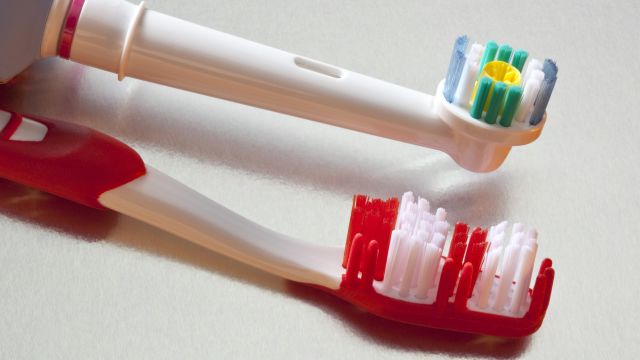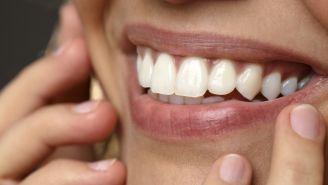With any important task, having the right tool can make all the difference. When it comes to toothbrushes, though, it can be hard to know which type is best. You have a host of toothbrush options, from manual to electric to ultrasonic, each making different claims. Here's how to get the best result for any budget.
Manual toothbrushes
Standard toothbrushes can be very effective at cleaning teeth—when proper technique is used. Make sure to hold the brush at a 45-degree angle so the bristles can remove plaque from under the gumline, and try to make small circles while brushing. Brush twice a day for at least 2 minutes and hit all surfaces, including the "tongue side" and the "cheek side" of your teeth.
To get the most out of a manual toothbrush:
- Always use a soft-bristled brush that bears the seal of the American Dental Association (ADA). A soft-bristled brush lets you apply enough pressure to remove plaque—the invisible layer of bacteria that coats your teeth—but not so much pressure that you wear down tooth enamel or brush away gum tissue.
- Make sure the toothbrush has a head size that fits comfortably in your mouth. If the head is too big, it will be difficult to reach the back teeth, where bacteria can thrive.
- Change your toothbrush every 3 to 4 months, before the bristles start to splay, and any time after you've been sick. Don't put your toothbrush in the dishwasher, which can damage the brush; simply rinse it after use.
Electric toothbrushes
Electric toothbrushes range from $5 battery-powered brushes to $200 top-of-the-line rechargeable models. Studies show that rechargeable brushes with a vibrating or pulsing action remove plaque five times better than the typical manual brush, according to Jonathan B. Levine, DMD, PC, a dentist in New York City.
To get the most out of an electronic toothbrush:
- Let the brush do the work for you. Electric brushes "get into difficult areas that you have trouble reaching without extremely good technique," says Dr. Levine. They also apply just the right amount of pressure on teeth and gums, while still being very effective.
- Select a model that has a timer. People using manual brushes spend just 39 seconds brushing their teeth, on average. That's not good enough! Many electric brushes have timers that beep when the recommended 2 minutes of brushing time is up, and some newer models beep every 30 seconds to let you know when to switch from left to right, or top to bottom.
- Change the replacement head every 3 to 4 months. Some replacement heads have a color indicator built into the bristles; when the color disappears, it's time to swap out the head.
Bottom line: If you can afford one, an electric toothbrush is a great investment in your oral health.






